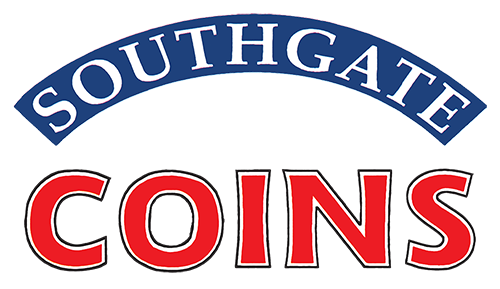← Back to Numismatic Education
History of the Carson City Mint
A year and a half before Nevada became a state, Congress passed legislation, in March 1863, to establish a mint in Nevada Territory. By this act, the U.S. government presumed that rich veins of precious metals discovered four years earlier in what became known as the Comstock region would necessitate an assaying and coining facility in this part of northwestern Nevada Territory. Abraham Curry, a founding father of Carson City, lobbied hard for the mint to be built in his town.
Curry’s persuasive tactics paid off and Congress chose Carson City for the site of the new mint. The government bought a tract of land in the northwest section of that small community in 1865, but because of more pressing concerns, like bringing the Civil War to an end, construction on the mint did not begin until the summer of 1866.
Appropriation delays and other problems dragged on construction for over three years, with Curry forced to visit Washington D.C. on occasion to plead for government cooperation. Exceeding the budget by nearly 200%, at a cost of over $426,000, Curry delivered the mint to the citizens of Carson City and the U.S. government in late fall 1869.
Delays in the shipment of dies from back east did not restrain Curry from opening the mint in the first week of January 1870, although it would be another month before his team struck any coins. The new 1870-CC Liberty Seated silver dollars, released in early February, launched the Carson City Mint on its colorful, but short, career of manufacturing coins with the novel “CC” mintmark.
Between 1870 and 1893—the year coining operations ceased—the mint on North Carson Street produced dimes, twenty-cent pieces, quarters, halves, two types of silver dollars, Trade dollars, and gold $5, $10, and $20 pieces. Due to various circumstances, the Carson City Mint did not strike coins in 1886, 1887, and 1888.
All told, the Carson City Mint released over 56.6 million coins, with a face value of just shy of $50 million. Morgan silver dollars, produced from 1878 through 1893 (none from 1886-1888), are the most well known of all coins displaying the “CC” mintmark. But many other date-denomination combinations issued by this fabled institution have captured the imagination and interest of collectors for more than 130 years.
Unique 1873-CC Without Arrows Dime
The rarest coin that survives from the Carson City Mint’s 24-year-run is the 1873-CC Without Arrows dime, of which only one example is known. In the second decade of the 21st century, this ten-cent piece is valued at between three and four million dollars. Louis E. Eliasberg Sr., the most recognized coin collector in history, once owned this unique dime. The owner of the prestigious Battle Born collection, the finest complete set (111 pieces) ever assembled, counted the celebrated dime as his most prominent jewel.
Three other classic rarities displaying the sought-after “CC” mintmark are the 1873-CC Without Arrows quarter, of which only five examples survive, the 1876-CC twenty-cent piece, with only 19 known survivors, and the 1870-CC $20 gold piece, with approximately 60 pieces extant.
The U.S. government sold the Carson City Mint building to the state of Nevada in 1939 for $5,000. On October 31, 1941 (statehood day), Nevada opened it as a state museum. Millions of tourists have visited this historic site over the past 70-plus years to view important artifacts and experience the 19th-century mint’s ambiance. Two featured attractions are the restored original coin press from 1870, and the celebrated Norman H. Biltz Carson City coin collection, which Wells Fargo Bank donated to the state of Nevada in December 1999.
Other mints, of which only eight have operated on U.S. soil, offer rich histories, but not one can compare with the passionate appeal to collectors distinctively characterized by the legacy left by the Carson City coin factory. It is, like the 1873-CC Without Arrows dime, a one of a kind.
If you'd like more information about the history of the Carson City Mint, you may be interested in the following links:
- James Crawford Master of the Mint at Carson City by Rusty Goe – Buy it here.
- Rusty Goe's 6-part article series in the Nevada Appeal newspaper detailing the events leading up to the establishment of the coin factory in Carson City.
- The Carson City Coin Collectors of America club, which produces an award winning journal, Curry's Chronicle.

